BARCELONA––A group of two women, a young man and a dog invite two adrift migrants aboard their boat to join in the group’s revelry. The scene is just one of nine ceramic pastiches in the style of 18th century European porcelain that were on display at Galeria SENDA (February 1 – April 17, 2019). The porcelain figurative works make up Russian collective AES + F’s exhibition Mare Mediterraneum.
As the gallery writes, the Mediterranean sea is “the epoch of global change,” and at the center of mass migration, armed conflicts, but also brilliant displays of humanity and empathy.
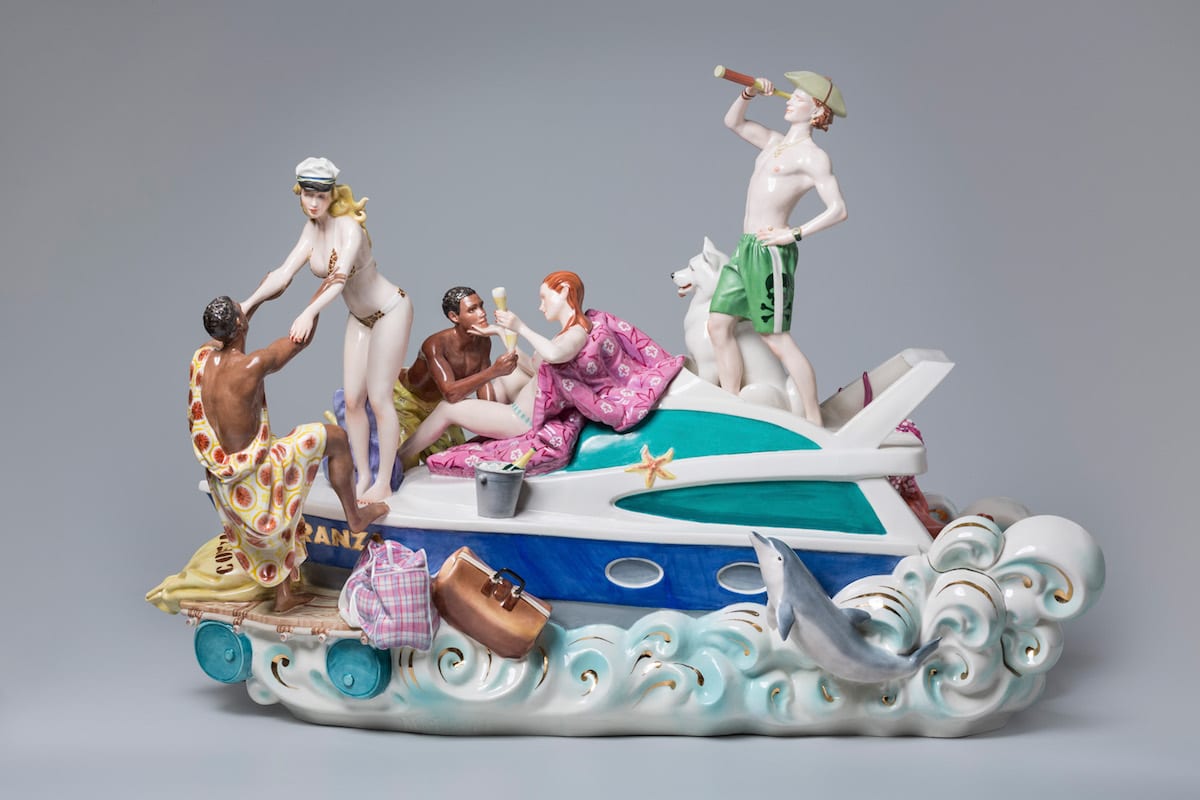
But what makes this body of work interesting is what the sea represents for Europe. Each work depicts presumably white European men and women extending open arms and celebratory libations toward migrants who have used the sea as a vehicle towards refuge. That’s all fine and well, but perhaps the viewer can see through the beautiful imagery for a tinge of something more insidious. Herein lies their’ dilemma.
This tragic situation has become a political conflict as well as the subject of negotiation and ideological speculation. In this form it has been transmitted by media as a meme in what is now described as ‘post-truth’. The ethical situation that has unfolded out of this is paradoxical to say the least.
AES + F
Making porcelain figurines on this subject could be thought an extreme manifestation of this paradox yet, through its distance, an artistic image may be more radical than reality itself because it can push conceptual limits.
Porcelain has always been a symbol of contentment and bourgeois comfort. The recent waves of migrations have confronted Europe with a dilemma: whether to accept refugees – allowing them to enter at the cost of the material and psychological comfort of their hosts; or to reject them in an immoral, inhumane, and cynical act that would undermine the co-operative ethical basis of Europe itself.
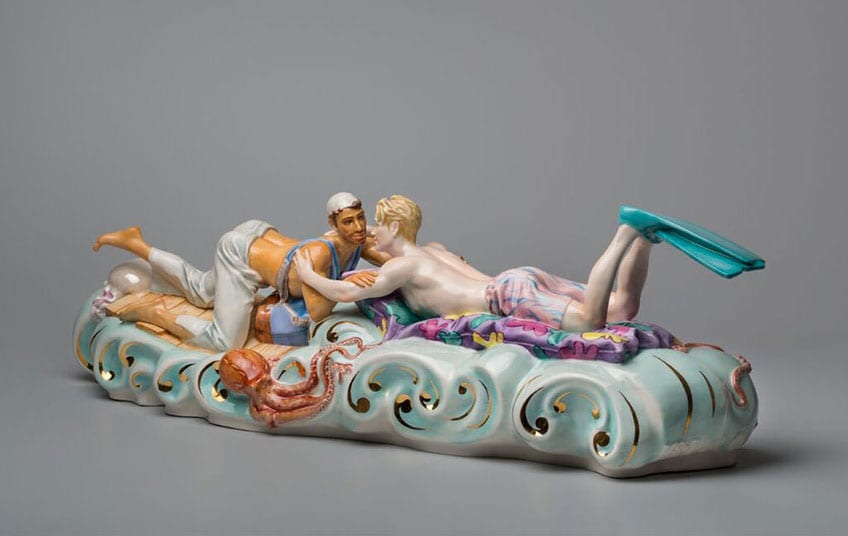
The collective, comprised of four Russian artists: Tatiana Arzamasova, Lev Evzovich, Evgeny Svyatsky and Vladimir Fridkes take an innovative approach to their work, as The Verge writes.
The artists see their work as a reflection of modern life––full of instability, vanity, and cultural collisions––which they cast in landscapes that are both digital and baroque.
The Verge
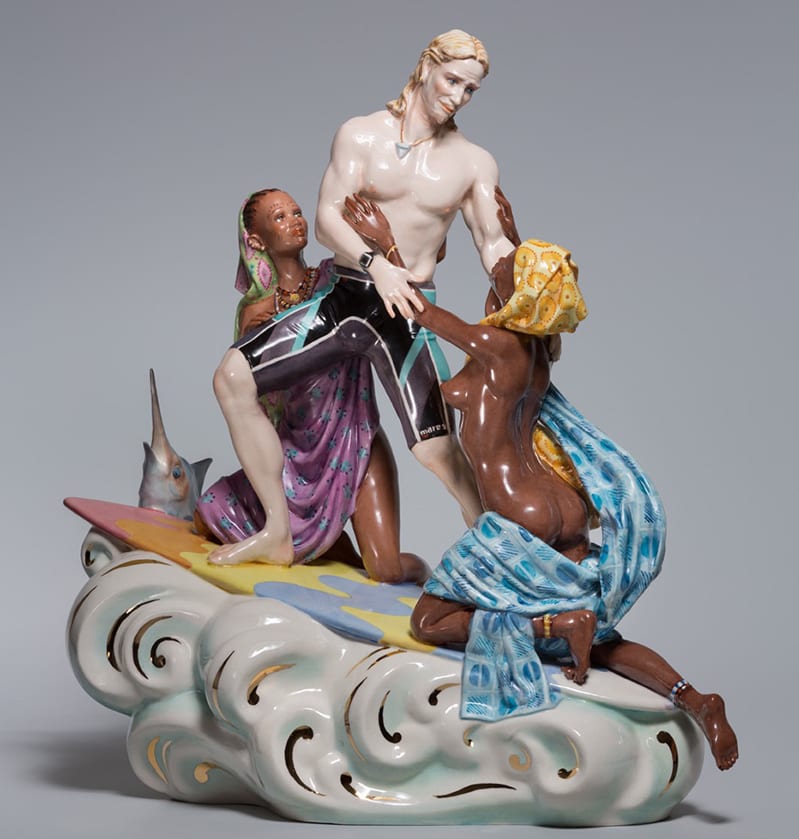
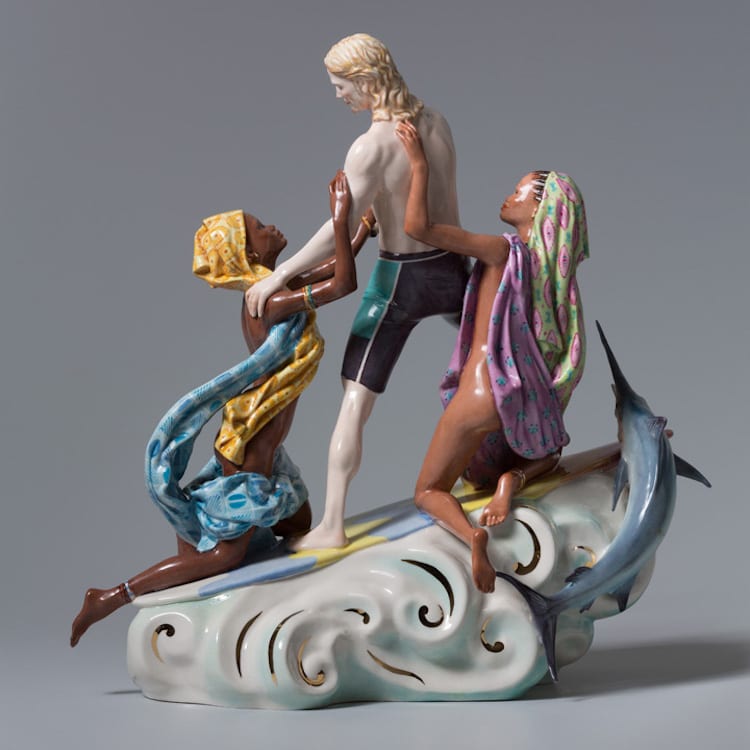
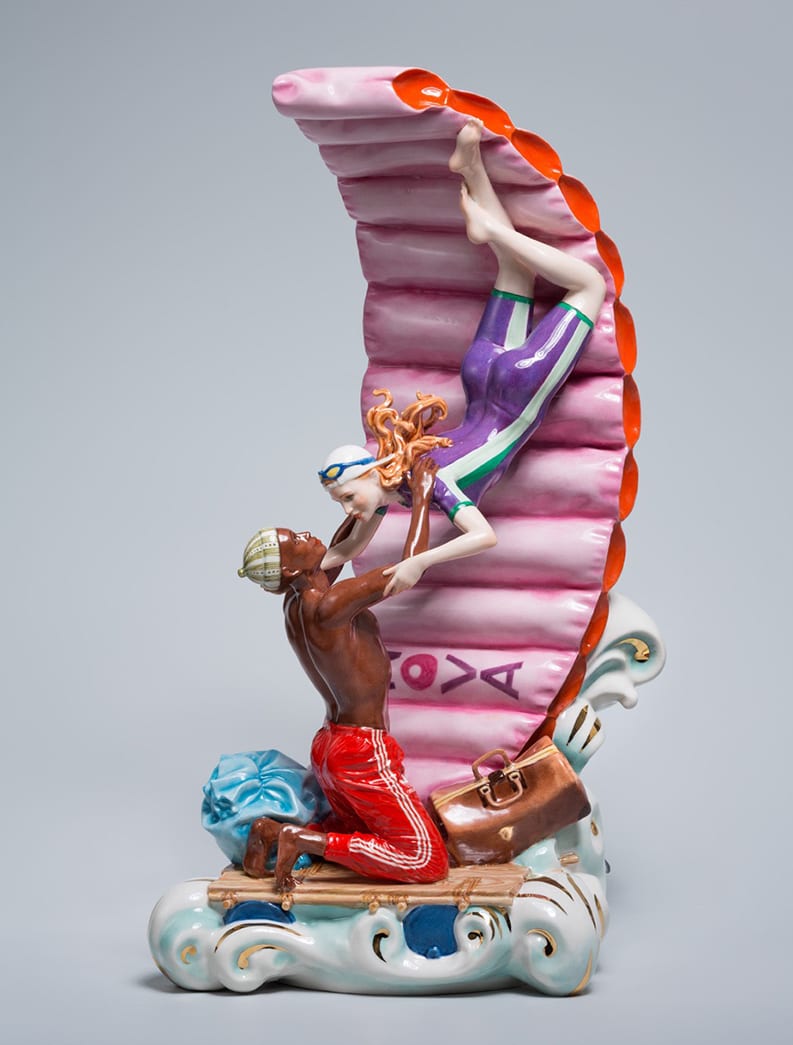
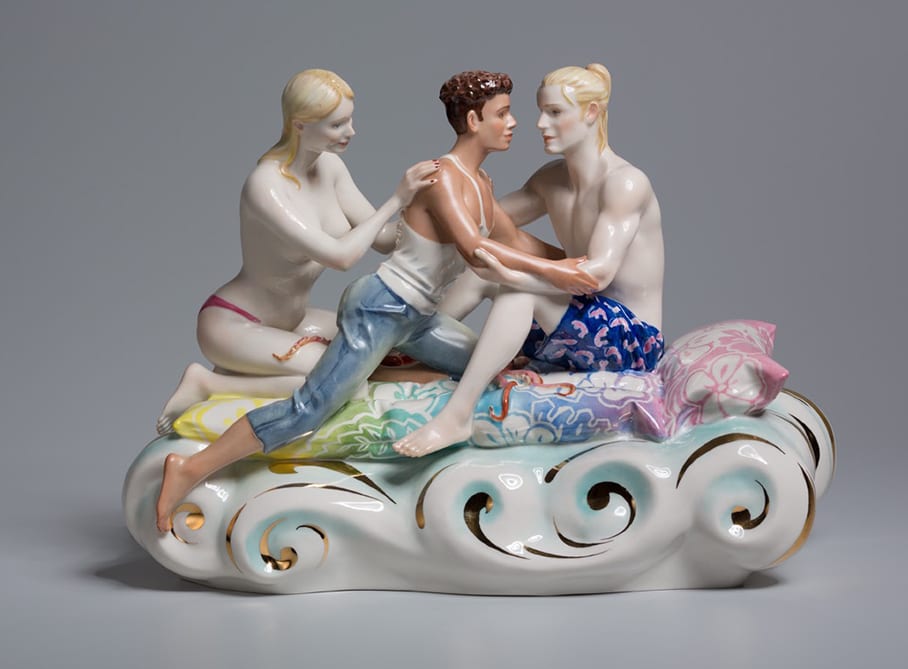
The porcelain works were displayed alongside a multimedia installation, and as Artspace writes, the group’s videos aren’t made in the traditional sense, but instead, are made by layering thousands of photographs to produce an ultra high-definition moving image.
Rendering surrealist, dystopic futures, AES+F builds dramatic narratives that recall both the simulated violence of video games and the glamour of high fashion photography, while their subjects pierce one another with arrows, beat each other up with golf clubs, or become gutted by the members of the animal kingdom of an alternate universe.
Artspace
Watch a video from the collective here.
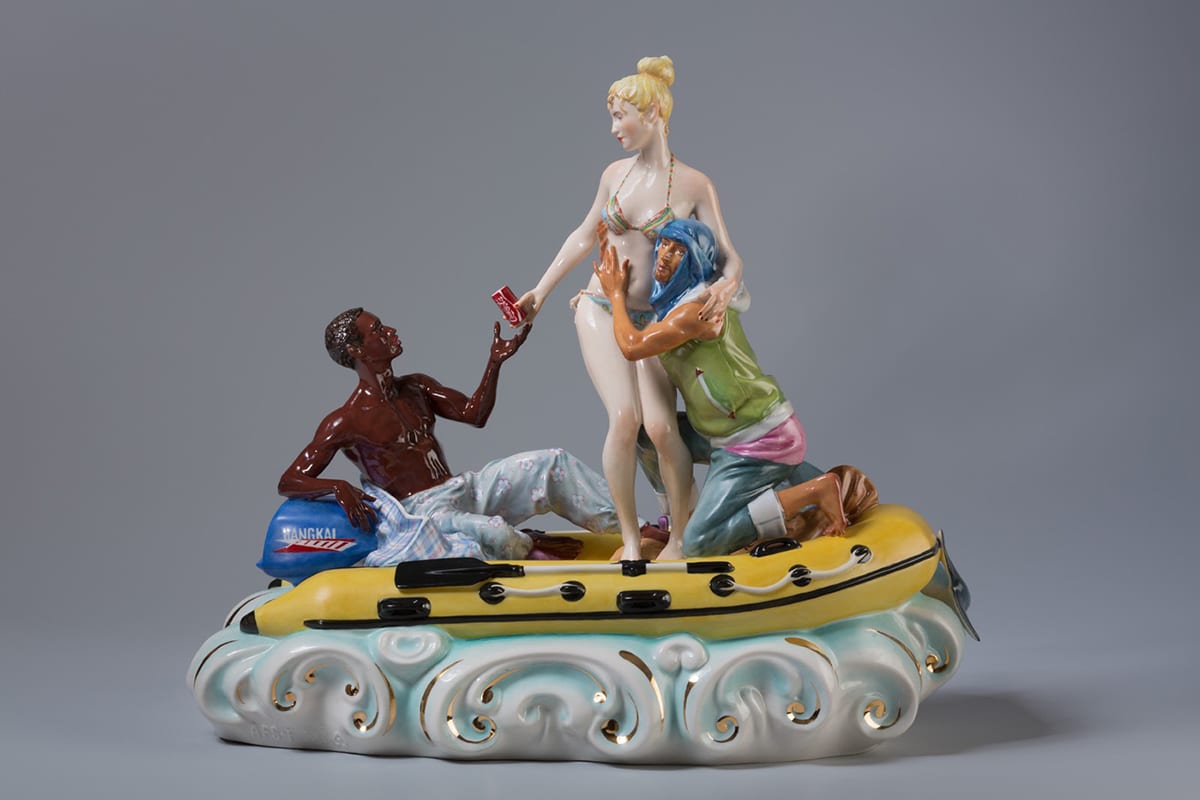
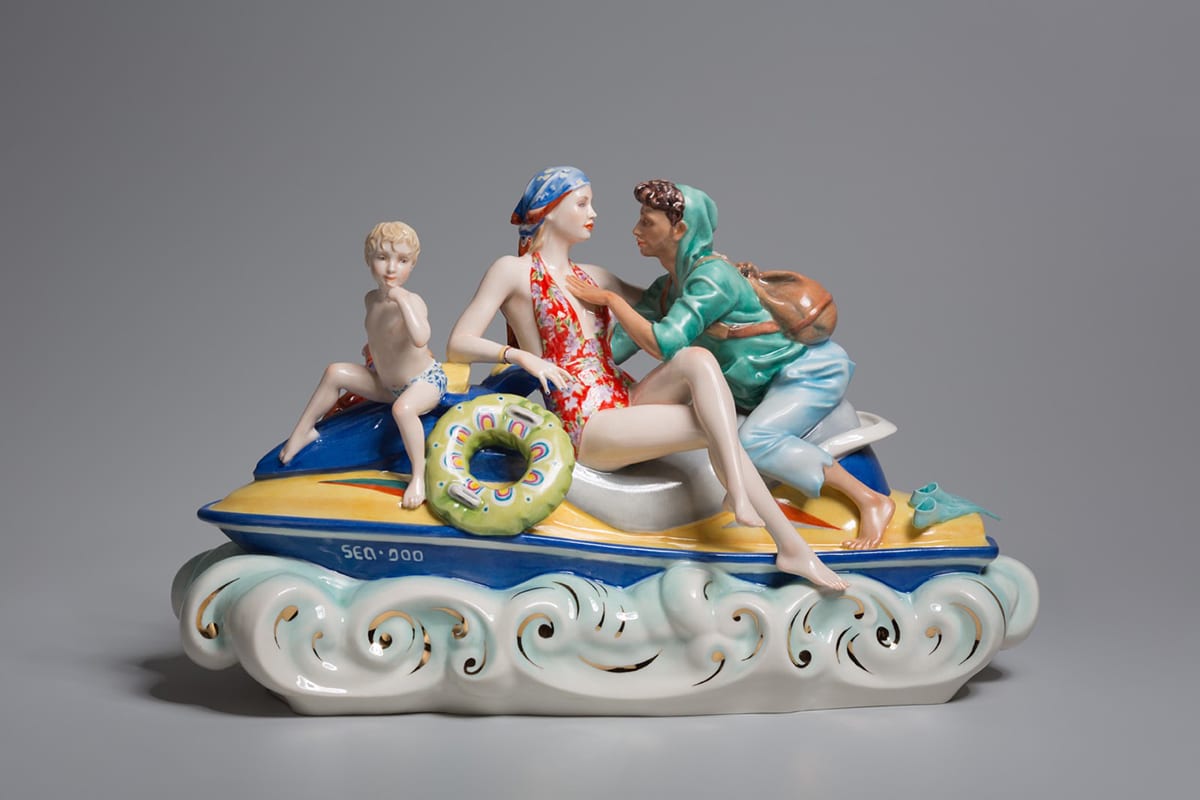

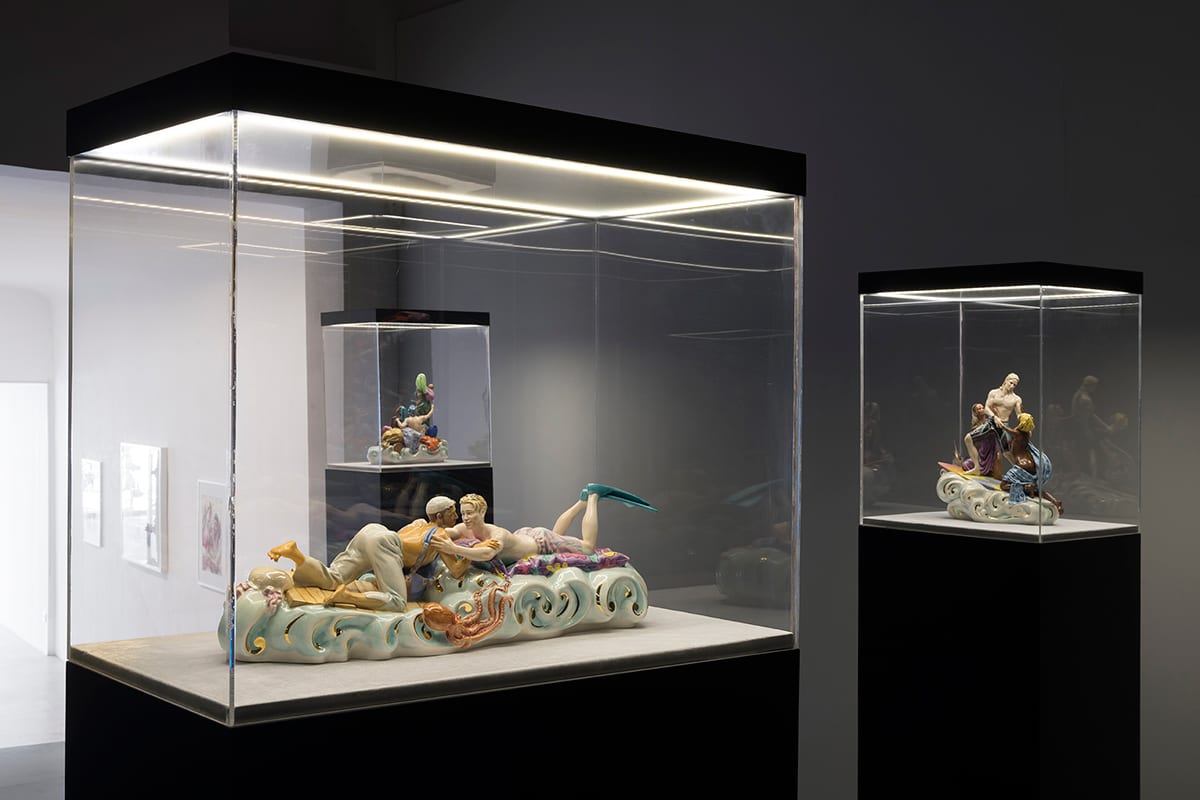
Read more from Artspace.
Read more from The Verge.
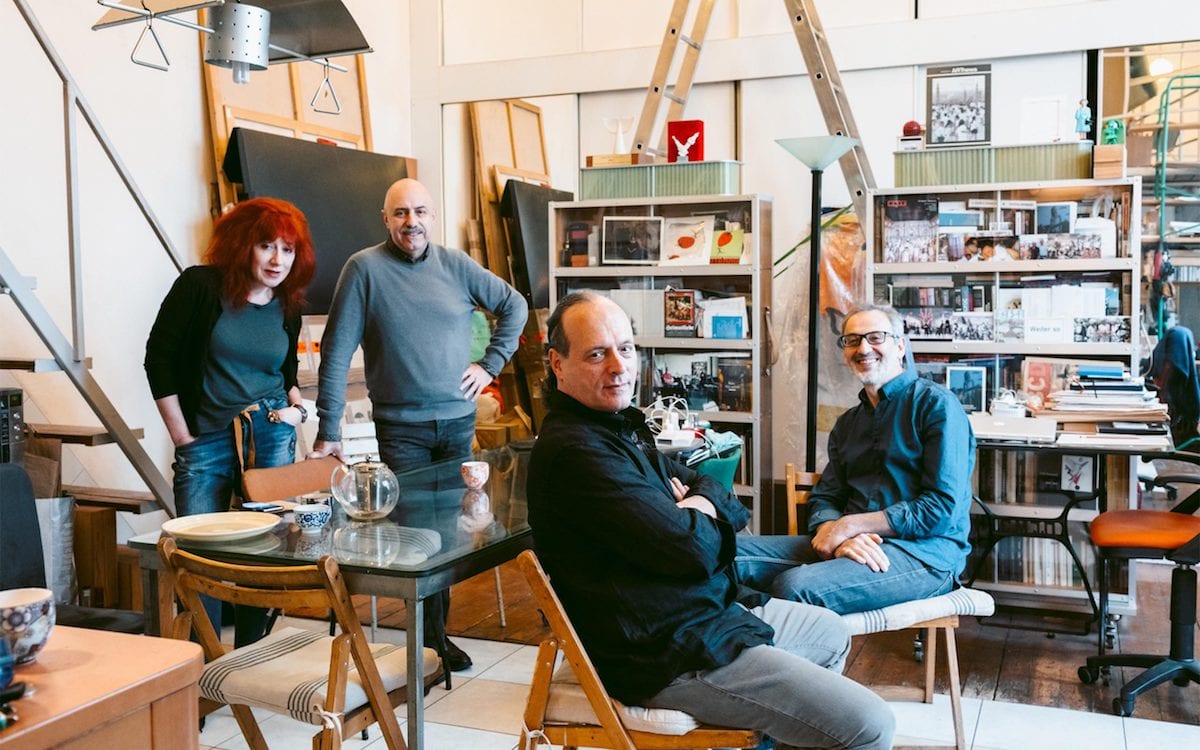
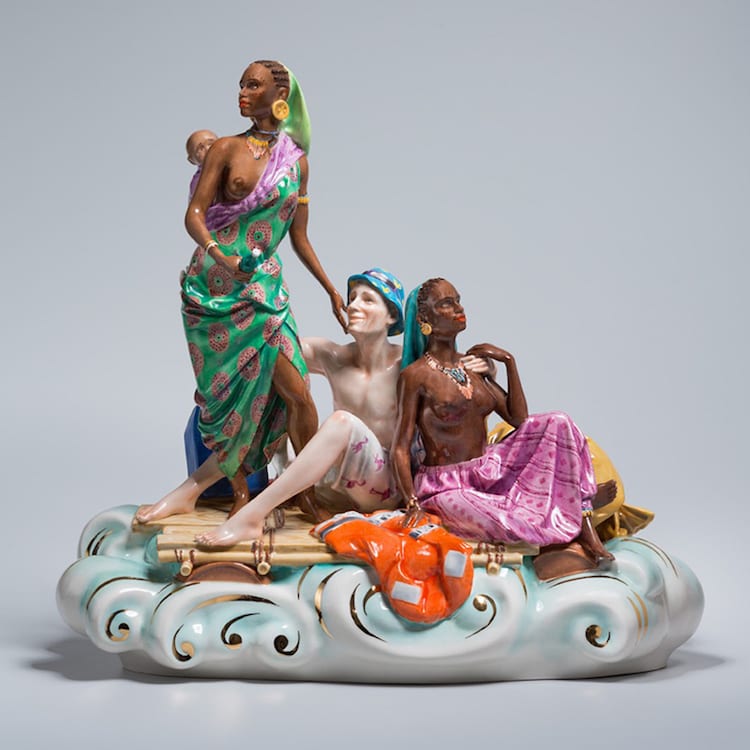
Add your valued opinion to this post.